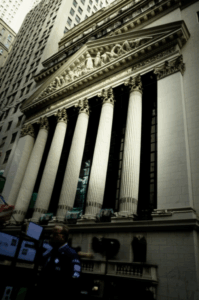Week Ahead – Markets Brace for Central Bank Barrage Amid Heightened Uncertainty
The coming week is poised to be a pivotal one for global financial markets, as a confluence of major central bank decisions across the world’s leading economies promises a “barrage” of policy announcements. Investors, from seasoned professionals to burgeoning young traders, are bracing for what could be a period of significant volatility and re-evaluation, as policymakers navigate the treacherous waters of persistent inflation and mounting recession fears. This convergence of high-stakes monetary policy meetings, coupled with an already fragile geopolitical and economic landscape, amplifies the inherent uncertainty, making careful observation and strategic positioning more critical than ever.
At the forefront of this week’s monetary policy blitz stands the U.S. Federal Reserve. Following a series of aggressive rate hikes, market participants will be keenly dissecting the Federal Open Market Committee’s (FOMC) latest decision, not just for the size of the next interest rate increase, but more importantly for Chairman Jerome Powell’s accompanying statements and the updated “dot plot.” This graphical representation of FOMC members’ interest rate projections offers a crucial glimpse into the Fed’s future trajectory. Will the central bank signal a pivot towards smaller hikes, or will it reaffirm its commitment to bringing inflation down “forcefully,” even if it means economic pain? The answers will profoundly influence everything from stock valuations to bond yields and the strength of the U.S. dollar, impacting investment strategies globally.
Across the Atlantic, the European Central Bank (ECB) faces a uniquely complex challenge. While grappling with multi-decade high inflation mirroring its U.S. counterpart, the Eurozone is also contending with an escalating energy crisis, the direct economic fallout of the war in Ukraine, and the ever-present risk of sovereign debt fragmentation among member states. The ECB’s upcoming decision will reveal how it intends to balance its inflation-fighting mandate against the very real threat of a deep recession and potential financial instability within the bloc. Any signals regarding the pace of future rate hikes or the activation of new tools to manage bond spreads will be scrutinized, setting the tone for European equities and the euro. Similarly, the Bank of England (BoE) is also expected to announce its latest policy decision, navigating a challenging domestic landscape marked by surging inflation, a cost-of-living crisis, and an economy teetering on the brink of recession. The BoE’s communication on its future path will be crucial for the pound and UK-focused assets, especially given the fiscal uncertainties that have recently roiled British markets.
Beyond the major Western central banks, the Bank of Japan (BoJ) continues to stand as an outlier. While most developed nations are tightening monetary policy, the BoJ has largely maintained its ultra-loose stance, clinging to negative interest rates and yield curve control in an effort to finally stimulate sustained inflation. However, with global inflation pressures mounting and the yen depreciating sharply against a strong dollar, there is growing speculation about whether the BoJ might finally be forced to adjust its long-standing policy. Even a minor shift in their rhetoric or a tweak to their yield curve control policy could send shockwaves through global bond and currency markets, given the sheer size of Japan’s economy and its role in global finance. This collective “barrage” of central bank activity underscores a global economy in flux. Each decision, though seemingly isolated, contributes to a complex tapestry of interconnected risks and opportunities.
For young investors, understanding these dynamics is not just academic; it has tangible implications for personal financial planning. The direction of interest rates directly impacts borrowing costs for mortgages and loans, the returns on savings accounts, and the valuations of companies, particularly growth stocks. Heightened uncertainty often translates into market volatility, presenting both risks and potential entry points for strategic investors. Monitoring key economic indicators like inflation rates, employment data, and GDP growth will be as important as tracking central bank announcements. The ability to discern subtle shifts in language from central bankers and to interpret the underlying economic data will be paramount. As this critical week unfolds, market participants globally will be hanging on every word, every data point, and every policy adjustment, knowing that the decisions made in these boardrooms will shape the economic landscape for months, if not years, to come. Navigating this environment requires not just alertness, but also a commitment to informed decision-making and a long-term perspective.





